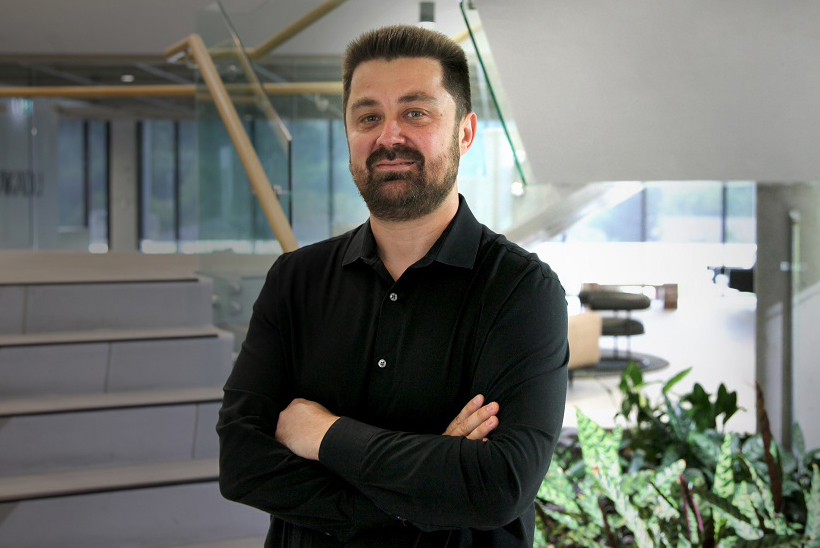November 1, 2023
Depending who you ask, diversification can be viewed as a strength or a weakness – a razor thin line between strategic genius and desperate gambler.
Labelling those who pursue such a methodology with either extreme characterisation would represent a foolhardy endeavour however, given the colossal returns and risks at play.
As with most business blueprints, case studies can be found to strengthen arguments on both sides.
In this case, tick the box of approval for Amazon, General Electric and Disney. But never forget Harley-Davidson’s failed attempt to enter the perfume market.
“Diversification doesn’t need to be quite such a roll of the dice,” observed Costas Markides, Professor of Strategic and International Management at London Business School. “Yes, it always will involve uncertainty; all major business decisions do.”
As outlined by Markides, the following six questions must shape all diversification strategies:
Diversification can be an unpredictable and high-stakes game which usually goes in and out of vogue as a corporate strategy, depending on market conditions.
On the one hand, companies face the decision in an atmosphere not conducive to considered deliberation – markets move, share is lost and hands are forced. Alternatively, forward-thinking businesses strike while the iron is hot and build on past successes to future-proof growth ambitions.
In the case of Dicker Data, both are true.
“Our whole idea is to diversify,” said Vlad Mitnovetski, Executive Director and COO of Dicker Data. “We’re a big believer in diversification. One of the biggest successes of Dicker Data – outside of our culture and our people – has been our ability to diversify our business during the past 10 to 15 years.”
The story of Dicker Data is well told – a technology distributor born in 1978 as the brainchild of David Dicker, a billionaire entrepreneur who still relishes the opportunity to punch above his weight against regional and global competitors.

From listing on the Australian Securities Exchange (ASX) in 2011 to becoming a billion-dollar business in 2015, the company has made a habit of ripping up the corporate rulebook in Australia and New Zealand (A/NZ). Today, annual revenue exceeds $3.1 billion with the Australian-owned and operated juggernaut showing no signs of slowing down.
But countless media headlines offer only that, a fleeting glance at an organisation capable of meriting deeper examination.
There’s no secret sauce or magic trick to be found – there never is in successful companies – rather a compelling case for building a local business on the pillars of:
“I’ve been doing this for 25 years and the market always goes up and down like a rollercoaster,” Mitnovetski accepted. “We know how to handle it and while we don’t have an exact timeline, we know what’s coming.”
Diversify to survive, and thrive
On occasions, diversification has been in response to severe strife – notably, the high-profile loss of distribution rights to the Cisco portfolio in New Zealand, a decision which torpedoed the local business in 2017.
During the first full-year of trading after the change, Kiwi revenue plummeted from $140.7 million to $90.2 million, dropping 36% as the threat of tailspinning loomed large.
“We crashed in New Zealand,” Mitnovetski recalled. “David and I didn’t know which way it would go because we carried a significant cost structure that we couldn’t cut because if we did, the whole business would have collapsed.”
Following a series of “quick decisions”, a battered and bruised Dicker Data staggered off the ropes and began to fight back through a diversification approach built primarily on cashing vendor loyalty cheques and forging new alliances.
“What doesn’t kill you makes you stronger,” Mitnovetski stated. “That was one of the best things that actually happened to our business because we diversified. We went big.”
After eventually establishing an even footing across the Tasman, the business doubled down further with the strategic acquisitions of two Auckland-based distributors – Exeed for $68 million in 2021, complemented by the buyout of Connect Security Products for $5 million in 2023.
“At one point we were a small $60 million distributor but now we’re on track to hit $600 million in New Zealand,” Mitnovetski said.
Today, Dicker Data is nestled behind market leader Ingram Micro in a highly competitive local ecosystem. Both are strong and both are reputable but could both reach the billion-dollar mark in New Zealand?
“The market is big enough for two of us so yes, I see no reason why we won’t both reach $1 billion during the next 2-3 years in New Zealand,” Mitnovetski claimed. “There’s a lot of consolidation with smaller distributors either disappearing or being acquired by the bigger players.”
While the battle scars of those years remain – and the decision to diversify will be remembered as a lesson in how to build resilience in the face of adversity – Dicker Data has equally demonstrated a long history of making hay while the sun is shining. In favourable market conditions however, diversification can often go unnoticed.
For example, this used to be a distributor with more than 80% of its business attached to the product line of HP. Today, not one single vendor represents over 10% of company revenue.
As per recent financial results, the overall contribution from the distributor’s top five vendors has reduced from 90% in FY12 to 48% in FY22.
Likewise, more than 10,000 active channel partners transact on both sides of the Tasman – 7,857 and 2,057 in Australia and New Zealand respectively – which also includes a network of over 2,000 managed service providers (MSP).
“That’s our engine,” Mitnovetski said.
Supporting this engine is a $15 million investment to expand warehouse capacity by 70% in the company’s Kurnell-based headquarters. Work commenced during the fourth quarter of 2022 with construction now completed and the fit out and warehouse racking currently being installed.
“We can now take advantage of the opportunities that come our way in many different markets,” Mitnovetski said. “In the past, we needed to maintain our margin position but now we’re ready to take the opportunity and become more aggressive.”
Never relax, always push ahead
Given the current state of the economy – and ongoing geopolitical concerns – hesitation among end-users to invest in new projects and initiatives is pushing a significant portion of IT spending allocated for 2023 into 2024. In other words, a wave of “change fatigue” is slowing down technology upgrades and deployments.
While many executives may refrain from acknowledging this publicly, both sides of the Tasman are nearing the end of a “disastrous” 12 months.
“Large deals are still there but not as many of them,” Mitnovetski maintained. “Projects are taking longer to close – there were big deals in Q3 that were budgeted and were ready to go but then the ask was to reduce exposure and make the deals smaller.
“That pushes the deal into Q4 and the vendors then respond, ‘okay, but we’re increasing the price in two quarters’ which is very typical currently. But we remain very bullish and optimistic.”

Such confidence comes amid the backdrop of half-year financial results for FY23, with Dicker Data nudging $1.6 billion in revenue during the six-month period ending June 30. At an increase of 9.4% year-on-year, this represented a new company record.
In FY22, the business reached $3.1 billion revenue – $743.9 million of which was recurring at a 42.5% year-on-year growth rate – and reported a net profit of $73 million after tax.
“Internally, we’re very happy but we’re a public company so we have to keep pushing and accelerating,” Mitnovetski outlined. “We can’t relax and instead must continue going against the industry trend to open up new markets.”
According to HY23 results shared in August, Dicker Data commands 35% market share in the corporate, commercial and enterprise markets in Australia, ahead of closest competitors Ingram Micro (17%) and Synnex (15%). In New Zealand, the business holds 29% share in a market defined by the distributor as consumer, large national retail, corporate, commercial and enterprise.
“We don’t do much retail so it’s mainly all commercial,” Mitnovetski explained.
“Our market share in commercial is getting closer to 40% which makes it slightly harder to grow because the market doesn’t grow that way. There’s not enough huge vendors that are currently selling direct capable of moving their business over to distribution.”
To meet unrelenting growth expectations, Mitnovetski said Dicker Data has embraced diversification across all aspects of the market, expanding beyond hardware to increase investment in software, cloud and cyber security. This is in addition to entering physical security plus access and surveillance sectors.
In that context, software revenue alone is expected to represent just under $1 billion by the end of the year based on strong double-digit growth from key vendors such as Microsoft, Check Point, Citrix, Trend Micro, Autodesk, Veeam and VMware.
“We’re growing well but if we start to reach $3.3 billion, then $3.6 billion and then $4 billion, we need to diversify even more,” Mitnovetski shared. “Even growing 10% in the commercial market on that number could represent an extra $300 to $400 million every year which could be challenging.”
Expand overseas but keep local touch
The common consensus among private equities and investors is that for Dicker Data to maintain aggressive growth ambitions, expansion beyond A/NZ is inevitable.
Unsurprisingly – and based on many years of internal analysis and external media commentary – Mitnovetski said this move is “definitely on the cards” and will materialise.
“We constantly think about it, we constantly talk about it,” he said. “We have at least another 2-3 years of very good growth in A/NZ but at the same time, we’re proactively looking.”
Given the question is no longer if – and to a lesser extent when – the focus shifts to where?
Can a model that has delivered more than $3 billion in revenue be transported from Sydney to Singapore, Dubai, London or New York?
“I’m absolutely convinced that it can and it doesn’t matter where we expand in that sense,” Mitnovetski affirmed. “We will keep the core fundamentals of having a strong, agile and flexible model that is driven by locality.”
But will the unique local flavour that Dicker Data has weaponised to such success be lost in the expansion?
“We would not launch anywhere as a regional or global distributor, we would operate as a local distributor,” Mitnovetski clarified.
“We love local and anywhere we go, we will be a local distributor. We don’t even care what it’s called because the important element is the autonomy, the decision-making and the vendor servicing. That has to be completely localised.”
Two natural entry points exist for any business expanding overseas – acquisition or organic growth.
Buying market share is widely viewed as quicker than planting a flag in the ground and starting from scratch. Dicker Data has history in this space following an acquisitive few years, investing more than $90 million since 2021 to buy three distributors in domestic markets.
Between the acquisitions of Exeed and Connect Security Products in New Zealand, the security and IT division of Sydney-based Hills was purchased for $19 million in 2022. Prior to this, the business acquired Express Data for $65.5 million in 2014.
“We’re definitely thinking of acquisition,” Mitnovetski confirmed. “For example, if a local distributor is doing very well with some good vendors in Singapore but the owner is retiring, that would be of interest.
“We know how to buy either a sick business such as Hills and turn it around or a good business like Exeed and grow further. We can support both motions.”
Champion business model differentiation
Compared to global or regional competitors, Mitnovetski said Dicker Data runs a “very different” business model internally based on heavy decentralisation and “complete ownership”.
A number of divisions each house managing directors holding full authority in terms of running profit and loss (P&L) balance sheets which includes top-line and bottom-line responsibilities plus equity and profit sharing advantages. Plugging into these divisions is a horizontal layer of sales, finance, marketing, logistics and the office of the COO – all tasked with delivering for each respective unit.

“Just produce the number, full stop,” Mitnovetski outlined. “But our layer on top will work for the business and my role is to maintain those exceptional services horizontally. I work for our managing directors.”
While the identity of Dicker Data has been forever defined as a local business built by a local entrepreneur, success isn’t about being homegrown and playing the patriotic card – the market will always reward based on outcomes not location.
This is an acknowledgement that locality offers autonomy which when used intelligently and strategically, can create competitive advantage.
“No one rule fits everything,” Mitnovetski explained.
A cynic could fairly argue that the strength of the local narrative was severely weakened when the company listed on the ASX. Yes, no regional or global overlords exist to hinder progress and ruin plans, but decisions are regularly interrogated by demanding shareholders and investors.
“But when you’re local, you have the ability to rectify your mistakes immediately and adapt to market conditions,” Mitnovetski countered.
“We don’t have rules like business managers at a certain level can’t earn more than $200,000 a year around the world. That’s the policy regardless. We don’t have any of that.”
Similar to building blocks of lego, a decentralised approach also offers opportunity to scale rapidly without the need to swing an entire business which turns as slow as a shipping container.
“We can grow from $3 billion to $10 billion with exactly the same model, as long as we find the right people to run those respective businesses,” Mitnovetski confirmed.
People are critical. Especially in a model which removes reliance on a central nervous system and instead champions departmental decision-making on the front lines.
Killing the corporate mainframe comes with a caveat – have the right people in the right roles making the right decisions. Get that wrong and the whole model comes crumbling down.
“Decentralisation has incredible pluses but the hardest element is maintaining the culture,” Mitnovetski acknowledged.
Encouraged by a “full ownership” philosophy, each business naturally wants to build a kingdom within a kingdom, accelerating ahead as fast as market conditions allow. Whether it be divisions built on Cisco or Microsoft technologies, each houses different levels of specialisation and go-to-market strategies.
“Yes, have your own individuality but only if the core values of the organisation are adhered to,” Mitnovetski qualified. “That is my job and as long as that job is done, I can add another 8-9 business units because the model is the same.”
On the downside, cross-company collaboration can be challenging. The art of packaging up complementary solutions and running joint activities between vendors is naturally not as easy in a decentralised environment.
But for most distributors, this is a secondary concern. The primary focus is on individual vendor success.
“Centralisation makes this easier because it’s as simple as saying, ‘you and you must work together’,” Mitnovetski said. “Evangelist roles also don’t work in our structure because they are typically used as cushions between roles in other organisations. We have no cushions.”
For Mitnovetski, this structure not only offers the opportunity to go deep but deeper than any large-scale distributor is considered capable of. Value can be delivered alongside volume.
“Dell doesn’t like us having a technical server specialist,” Mitnovetski outlined. “Dell loves us having a Dell technical server specialist. But a lot of distributors can’t afford to do that so instead they will have a generic server specialist working across Dell, Hewlett Packard Enterprise, Lenovo and Hitachi portfolios.
“We don’t do that because every single person must be dedicated to the cause of a particular vendor. Plus, vendors hate being grouped with competing vendors yet lots of distributors continue to do it.”
The aim is to become a true extension of the vendor, a vendor that usually takes care of the top 10-20 partners and requires distribution to service the hundreds – if not thousands – below. Considered a table-stakes offering at best perhaps, but for Mitnovetski, this level of detail in a decentralised model matters.
“When a partner calls, they need to feel like they are calling the Dell server technical team, they don’t need to worry about Dicker Data,” he added.
“Vendors want distributors to understand the brief and to execute on that brief. Unless you’re specialised and have dedicated businesses only working for that vendor, we think that becomes difficult to achieve.”
Based on more than two decades of experience, Mitnovetski acknowledged that the importance of distribution is usually most recognised during tough economic times – “value is more appreciated, needed and utilised”.
But in keeping with company strategy, Dicker Data will continue to diversify regardless of which way the market wind is blowing.
Inform your opinion with executive guidance, in-depth analysis and business commentary.